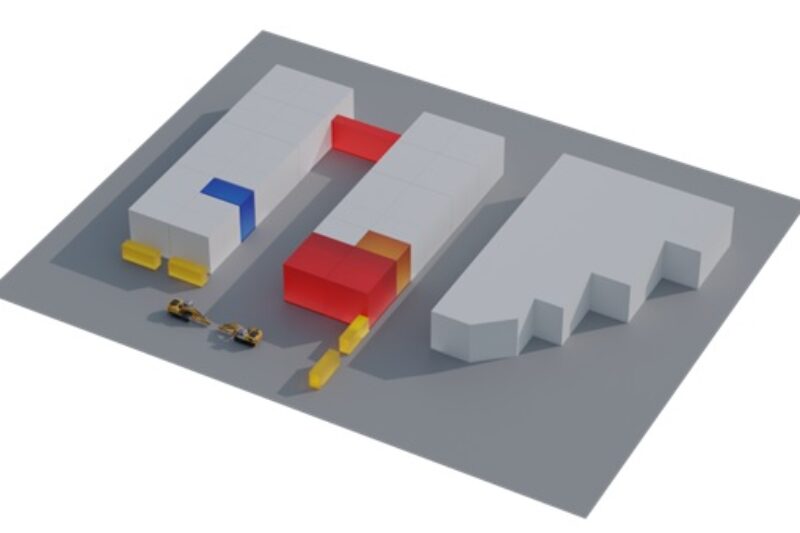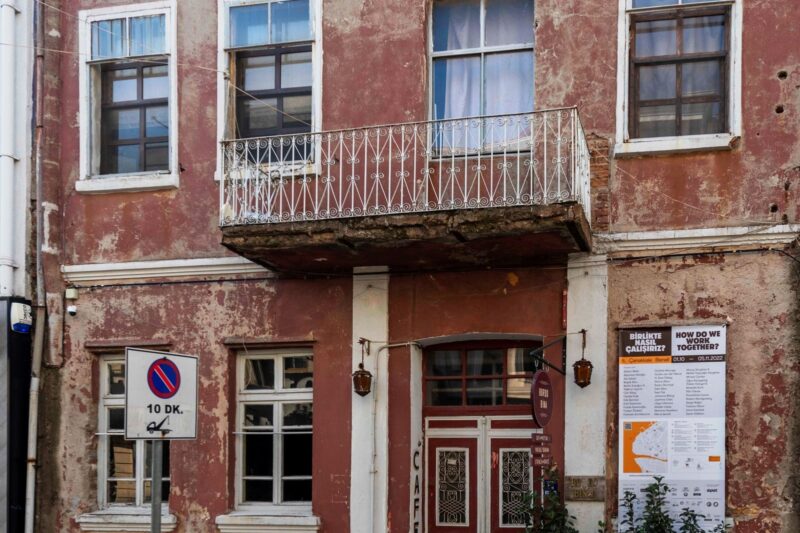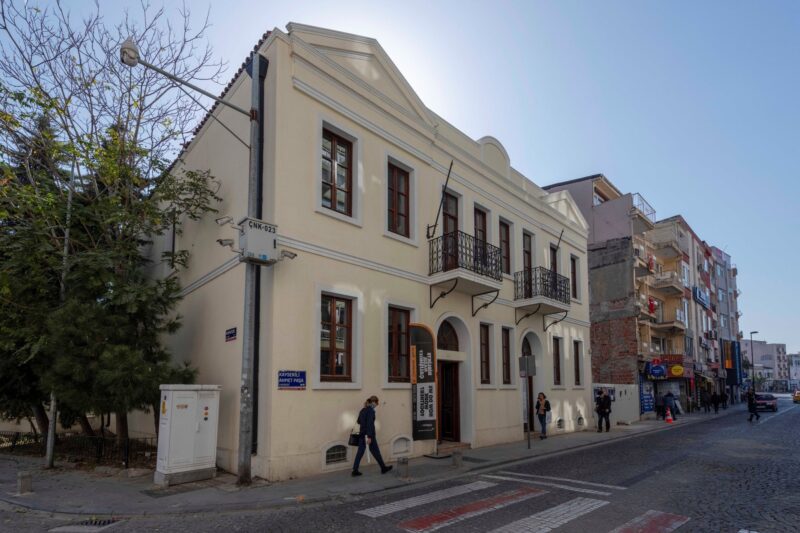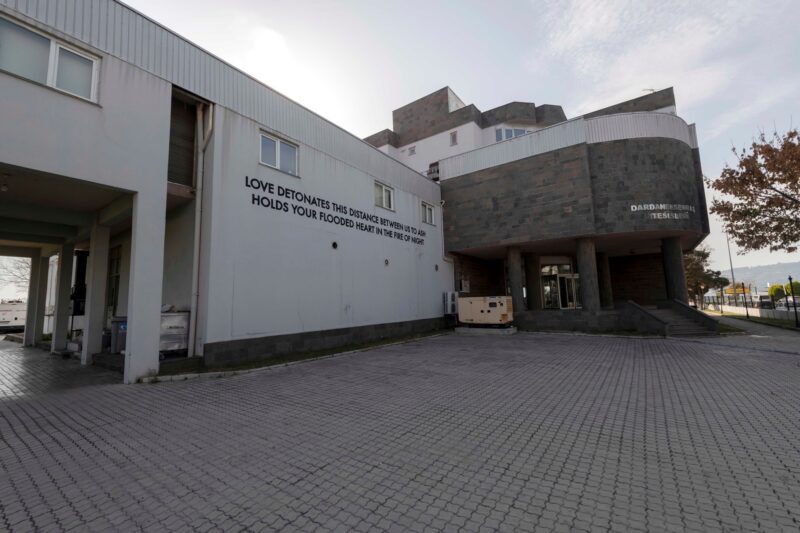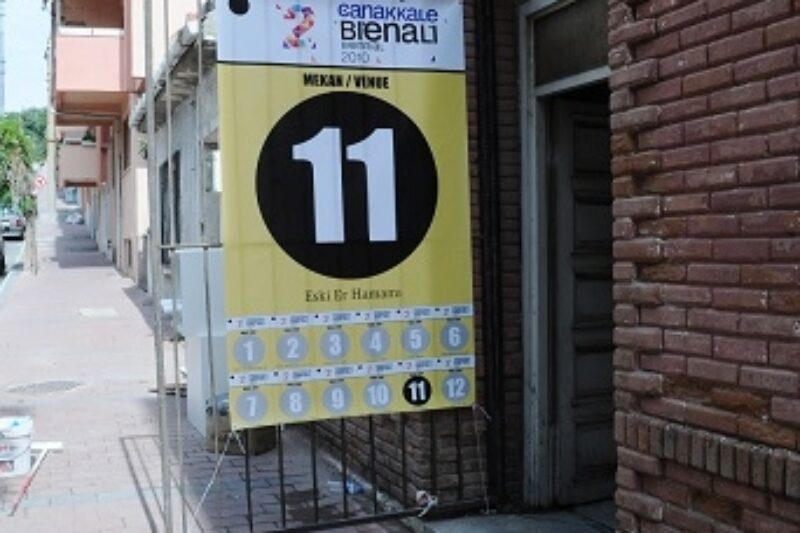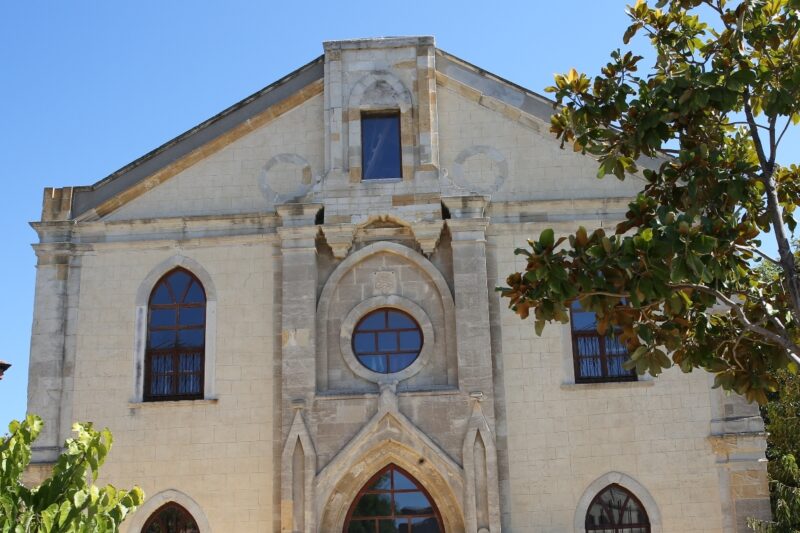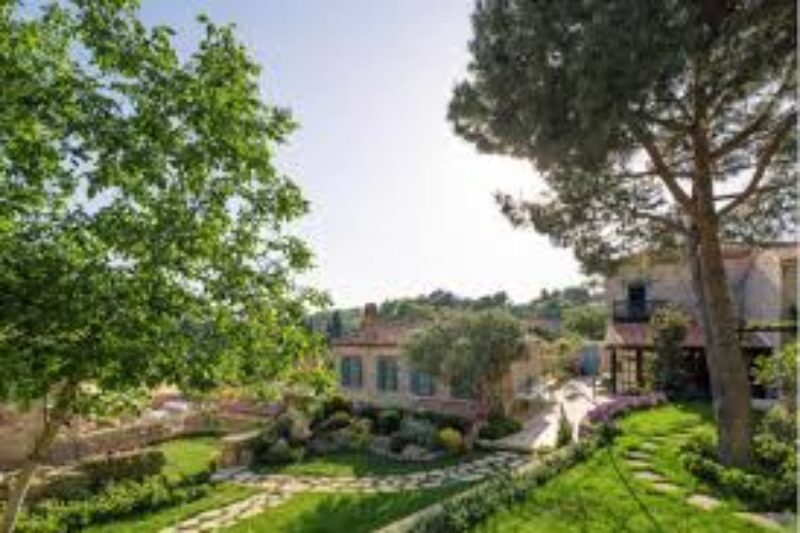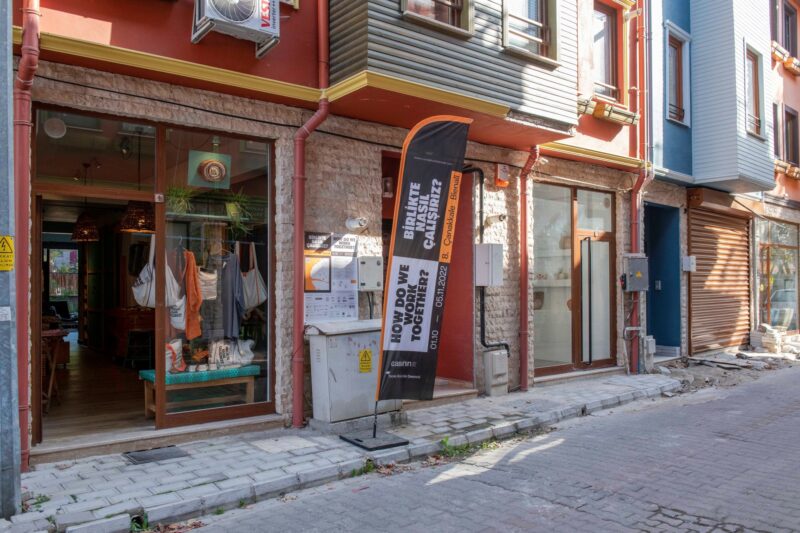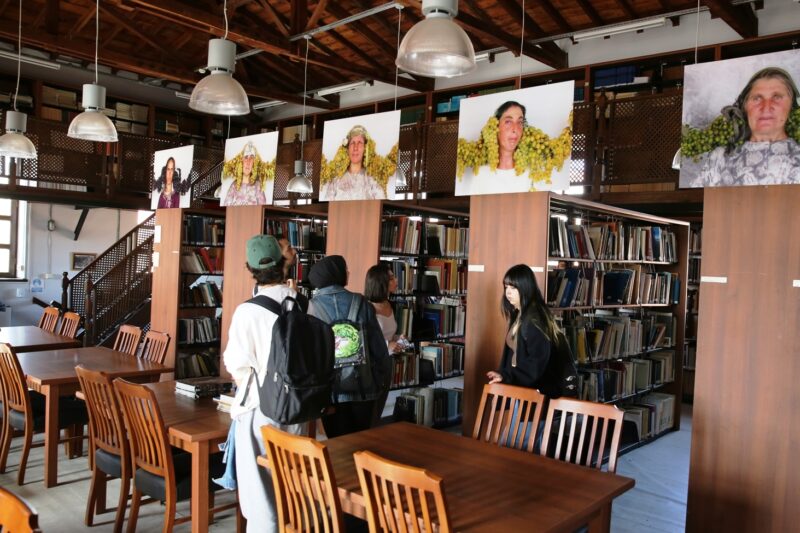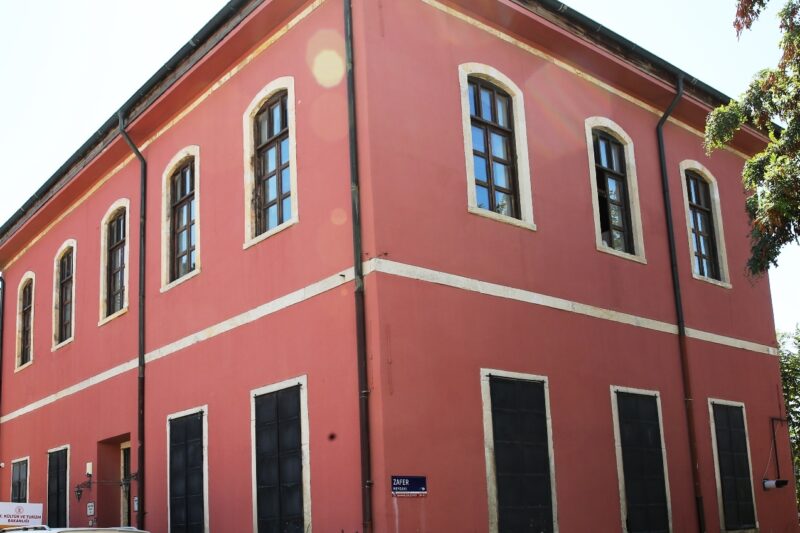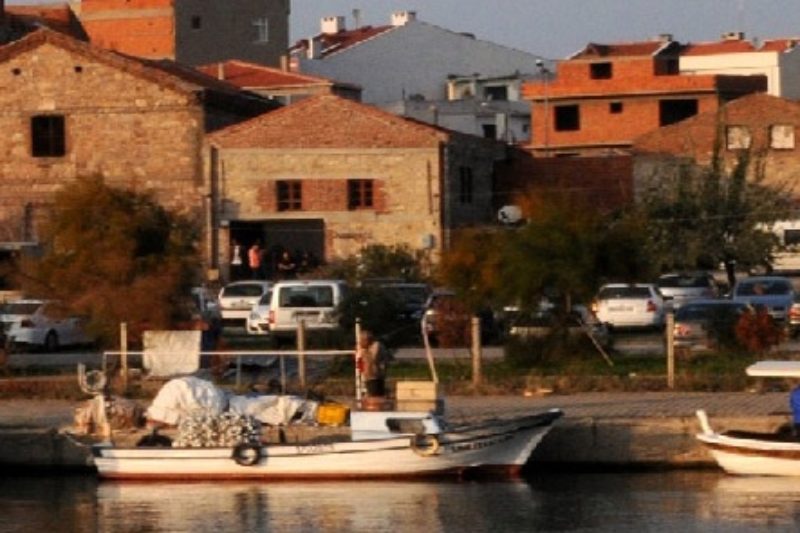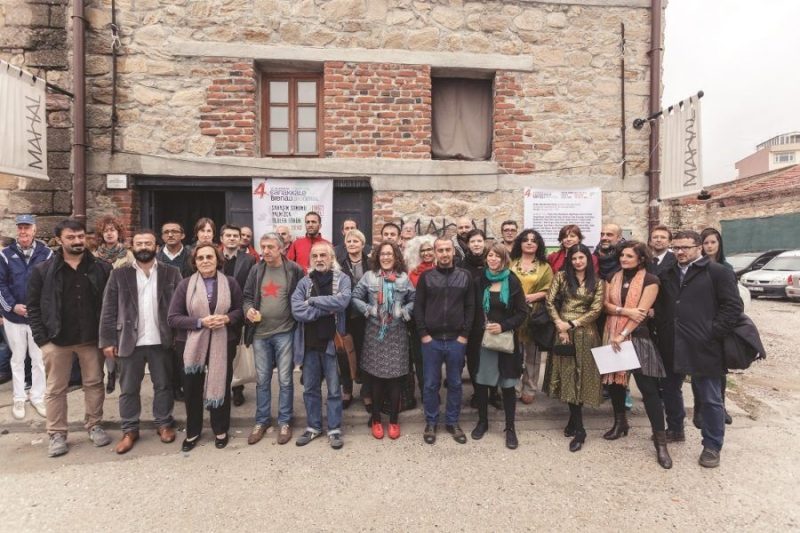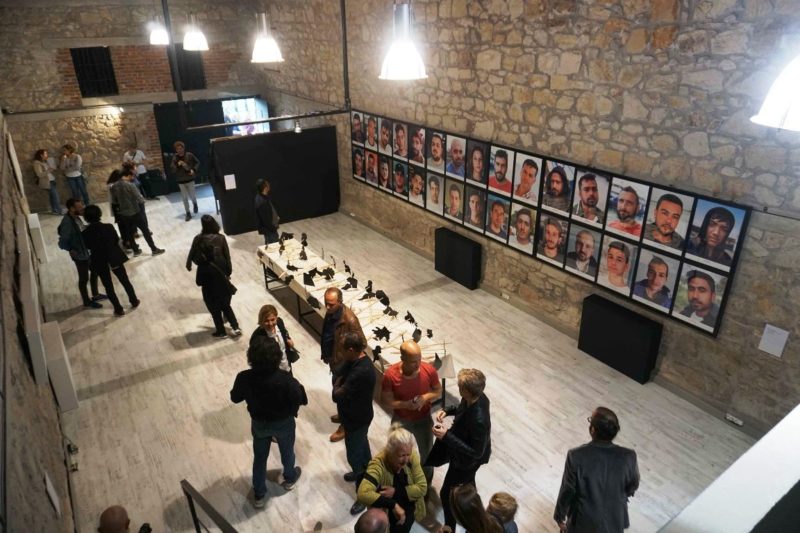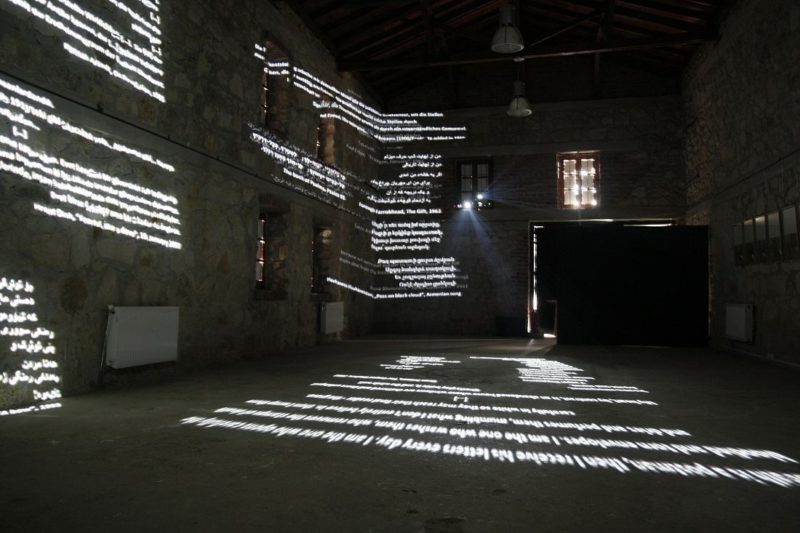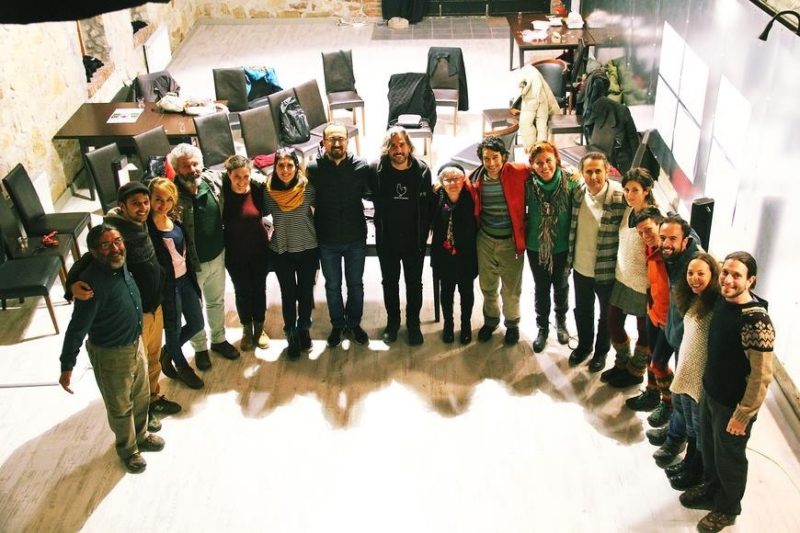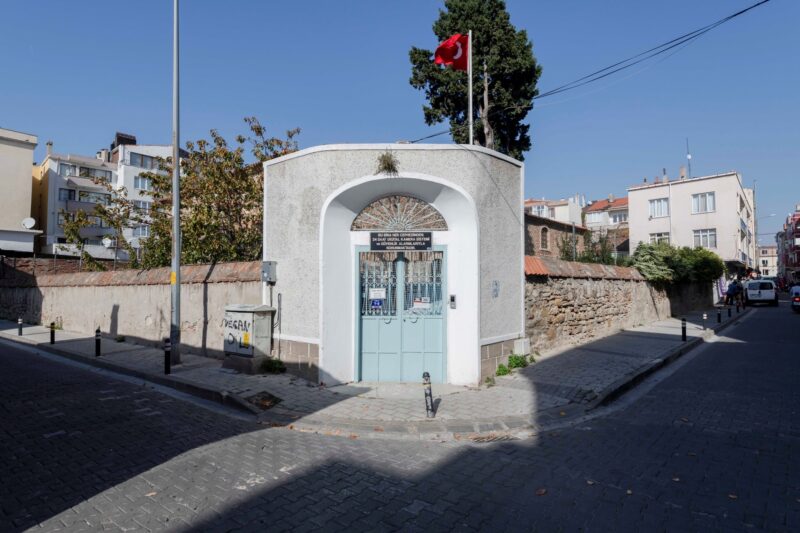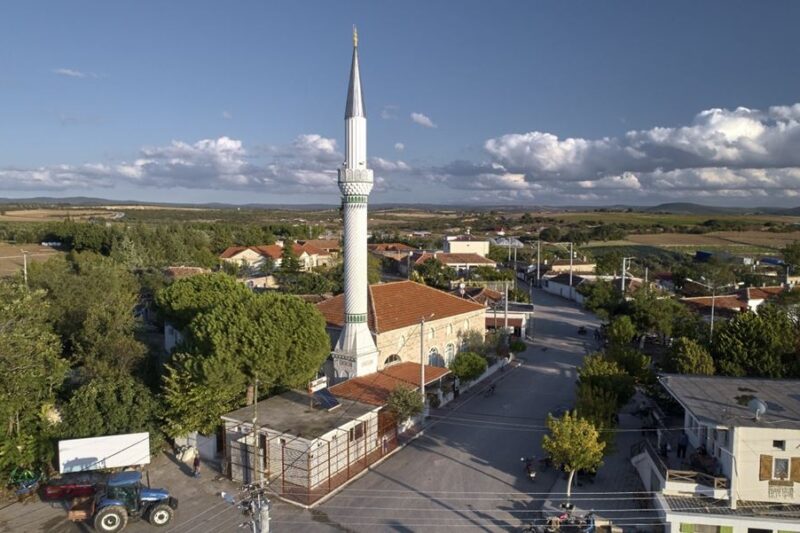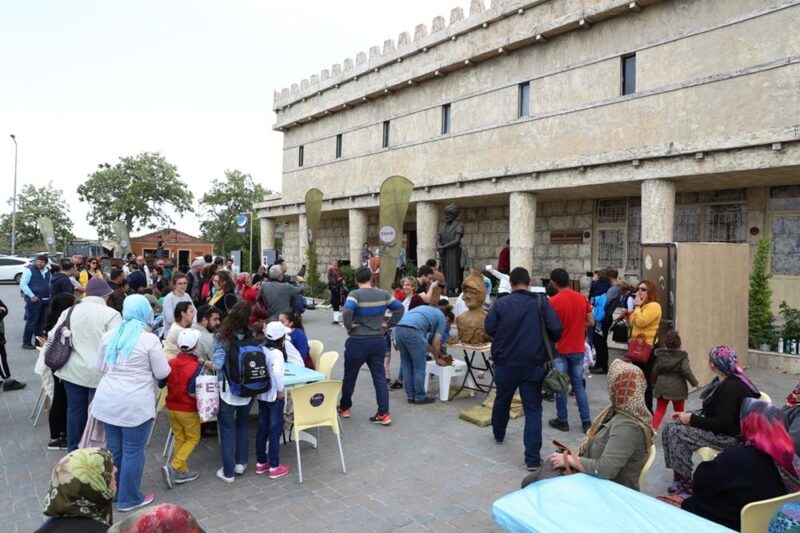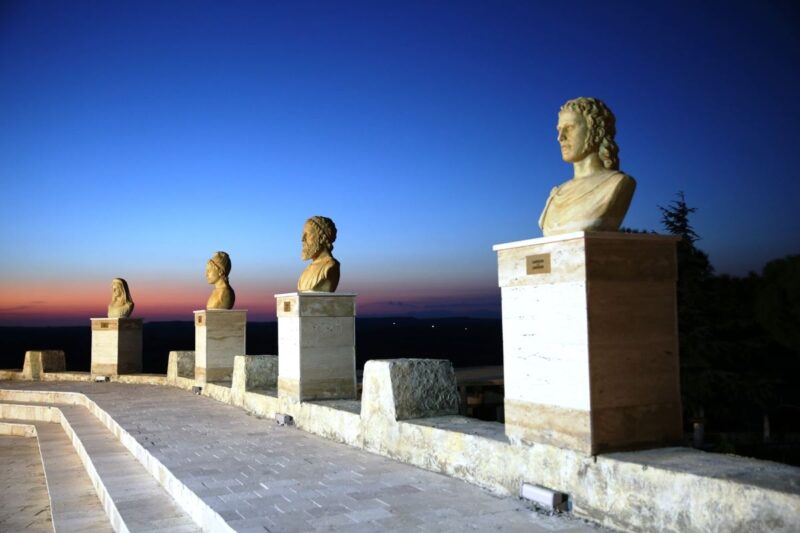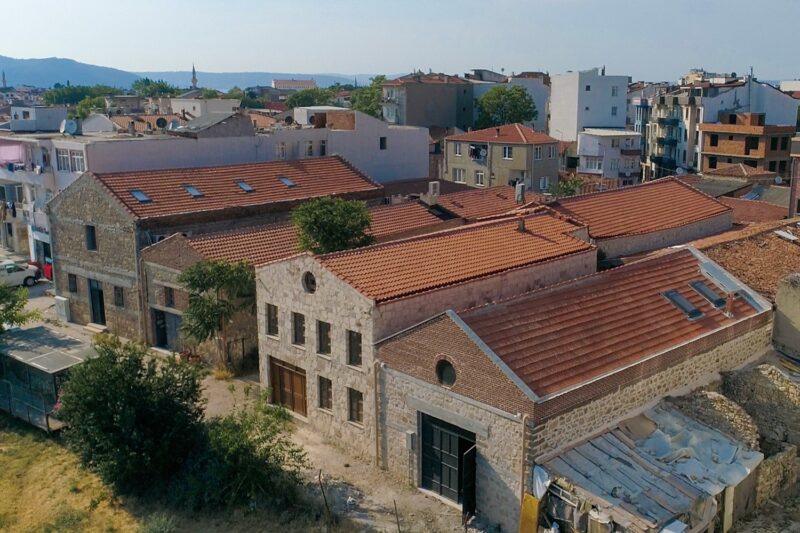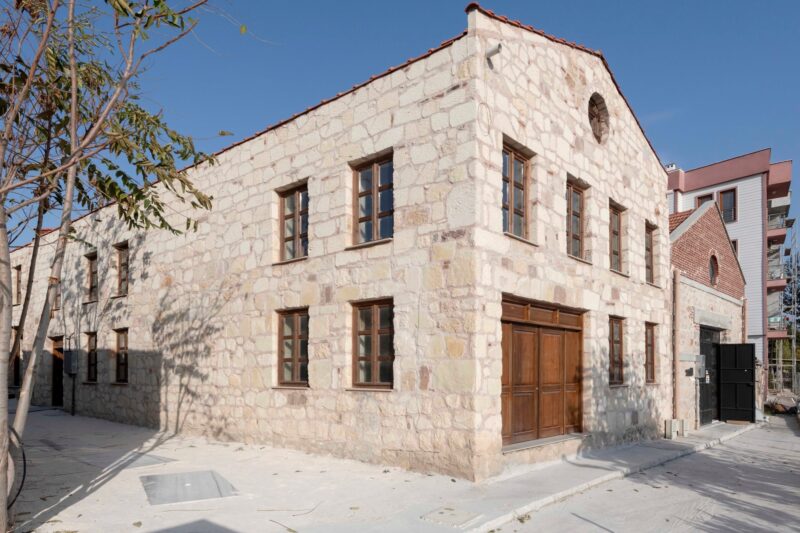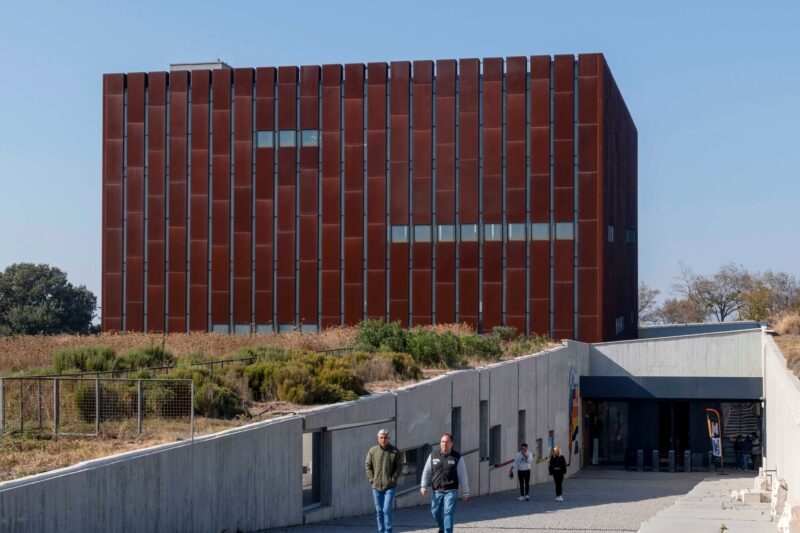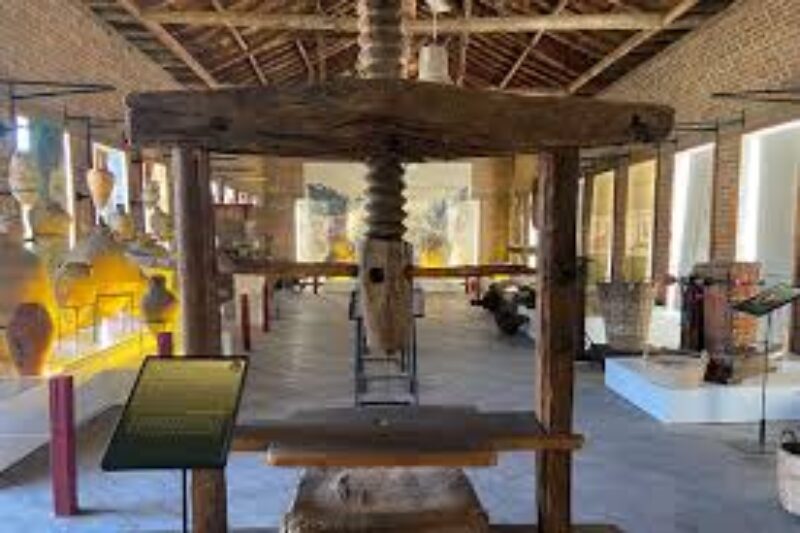Cancellation Announcement, 05 September 2016, Çanakkale
In recent years, our region has experienced an atmosphere of war and conflict, and the recent tragic events which the country has gone through has deeply upset us. Since January 2016, both the national and international press has been informed that the 5th Çanakkale Biennial, meant to take place between 24 September – 6 November, would focus on the issue of “migration”, one of the most urgent questions for our region and our city. The biennial did not seek to limit the issue to what is happening in the Middle East today, but to express the universal idea of being “torn apart” from one’s homeland through the delicate and empathetic works of 42 artists.
Organised by the civil initiative CABININ since 2008, the Çanakkale Biennial has always been unique in its active involvement with public, private and civil formations and in its dialogue with all segments of society. It has been an increasingly important responsibility to organise an internationally recognised event in Çanakkale through the universal language of art and to make visible the social fabric of our city that has adopted a culture of peace and tolerance. With this responsibility in mind, we have continued our work with dedication, with the ongoing support of our partners and supporters.
At this point, with less than three weeks left to the opening of the Çanakkale Biennial, we are deeply saddened by the developments within a political agenda that does not place art as a primary point of concern. Beral Madra, the art director and the co-curator of the biennial since its third edition in 2012, has willingly left her position due to this agenda that is contradictory to the basis of our organization.
As the Çanakkale Biennial Initiative, we will continue to represent the values of the Biennial, built upon the hard work of hundreds, and of our city, through maintaining our practices in the artistic field. However, in these circumstances where art is eclipsed by the developments that exclude it, and also due to the sensitising atmosphere caused by the realities that surround us today, we have lost our ability and enthusiasm to carry out the Biennale in line with our most vital values. For this reason, we would like to sadly announce that we have decided to cancel the 5th Çanakkale Biennial, which was planned to open on 24 September.
In addition to the Municipality of Çanakkale, the main sponsor of the biennial, communications were carried out with various national and international organisations to ensure participation and support for this year, as with the previous editions. We would like to thank our main sponsor, the Municipality of Çanakkale and also the Governorship of Çanakkale, for their venue support, and the Republic of Turkey Ministry of Culture and Tourism among other supporters, for their contributions.
We would like to express our deep gratitude and love for all artists, participants, supporters for the hard work and support they have given to the biennial to this day.
Exactly one year after Aylan Kurdi’s lifeless body was washed up on our shores, we would like to dedicate the unrealised 5th Çanakkale Biennial and the efforts of everyone involved to all the people who have been expelled from their homelands.
Kind Regards,
CABININ – Çanakkale Biennial Initiative
The 5th International Çanakkale Biennial (24th September – 6th of November 2016) entitled: “Homeland” (Vatan, Heimat, الوطن, الأم, Patria) with the distinguished participation of artists, art and culture institutions, art critics and curators, will focus on the homeland/heimat imaginations bound to 20th century nationalism and its tragic and problematic consequences being witnessed as constant global emigrations, refugees and exiles.
The source of inspiration for the 5th International Çanakkale Biennial is the philosopher, writer and journalist Villém Flusser, a refugee of WWII. His words about the concept of homeland/heimat, which were the motivation for the concept of the 5th International Çanakkale Biennial, penetrate into the innermost core of the migrant and refugee tragedy that confronts humankind in the 21st century: “Homeland is not an eternal value but rather a function of a specific technology; still, whoever loses it suffers. This is because we are attached to heimat by many bonds, most of which are hidden and not accessible to consciousness. Whenever these attachments tear or are torn asunder the individual experiences this painfully, almost as a surgical invasion of his most intimate person.”1
What does homeland mean today in active politics? Many political parties with rightist national ideologies name themselves “Homeland Party” which implicates a dedication and commitment to the homeland, places it in sacredness and exempts it of any criticism. The concept is commonly used as a unique, unchangeable identity and source, and supposed to have mostly positive connotations. Home sounds like a harmless concept when used by right-wing extremists to convince the people that they have a moderate discourse. However, a Foucauldian interpretation claims the opposite: “The home supports the operations of modern regimes of power, biopower, procedures and technologies of the self, regulating and determining the habits of the body. Thus habituating the connections between the body and the nation, they function as regulatory controls: a biopolitics that results in excommunication from the home and homeland. Home and Homeland are interlinked; the home is intimately tied to what Foucault calls the games of truth, relations of power and forms of relations to oneself and to others.“2
The ongoing common judgement is that the individual cannot choose his/her homeland/heimat but is born to it and it is his/her fate. The ones who are not born in that homeland are foreigners, who cannot be accepted or forgiven when they claim any kind of affiliation. Evidently, this kind of socio-political formula is an explicit clash with neo-capitalist cosmopolitanism as well as with globalism, which, through rights of world citizenship as well as financial profits through human migration, allows and provokes people to live where they want. The rights to live in a chosen country or the wish to live rootlessly and the forced immigration or the refugee problem are two sides of these socio-political and economic arguments.
In both cases, immigration is elaborated by right-wing politics as challenging and precarious to the concept of homeland/heimat since the right to live rootlessly as a world citizen or forced immigration opens up flexibility, elimination and dispersal in the concept of homeland /heimat. For right-wing politics, this concept combines the basic assumptions of all radical and nationalist ideologies, according to which the individual is not free as a central, active subject, but submits to a supposedly closed, homogeneous community.
What is happening now on the shores and borders of Europe is almost prophesied in Foucault’s Madness and Civilisation: “Confined on the ship, from which there is no escape, the madman is delivered to the river with its thousand arms, the sea with its thousand roads, to that great uncertainty external to everything. He is a prisoner in the midst of what is the freest, the openest of routes: bound fast at the infinite crossroads. He is the Passenger par excellence: that is, the prisoner of the passage. And the land he will come to is unknown—as is, once he disembarks, the land from which he comes. He has his truth and his homeland only in that fruitless expanse between two countries that cannot belong to him.”3
Based on this quotation, in his essay, William Walters4 discusses migration, deportation and viapolitics following in Foucault’s footsteps. In this poetic paragraph, Foucault mentions the Narrenschiff (the ship of fools, the ship full of madmen drifting into the harbours of European cities, their removal ordered by the authorities). Walters explains: “What was the meaning of this practice of using ships to ferry away from the madmen? Foucault insists it was more than a ‘general means of extradiction’; it was a highly symbolic act that had everything to do with the way madness was coming to haunt the imagination of the Renaissance.” With the term viapolitics he indicates “a migration policy-scape that is increasingly preoccupied with the routes and journeys taken by migrants crossing militarized and surveilled borders. Whole territories are now labelled ‘transit countries’, and their governments are pressured to crack down on migrant routes”. This hard-hearted determination, defined here as viapolitics, confronts the poetic expression of Foucault and the current tragedy of the refugees, precisely delineating the cold-blooded system, logistics, method, techniques and processes of the current condemnation to homelessness.
Now, witnessing the images of drifting and sinking boats in the Aegean and Mediterranean seas, we have to ask the question: What is the reason for today’s immigration, deportation and that viapolitics?
Today it is difficult to live in a very complex and enigmatic region such as the Middle East, a region of ancient civilisations that made the World we live in. Throughout the centuries it was a realm of utmost creativity, thought and wisdom, while from the 19th century on it became a region transformed under imperialism and other radical ideologies, bearing all the welfare, but also the vices and burdens of 20th-century politics and economy. Words can neither describe the magnificence of its nature and monuments nor define the disasters, interrupted lives and war as it exists in this region. 3
The majority of people living in the region were born into a modernized yet traditional society as programmed by colonisation and had to face one of the most ambitious utopias of 20th century, with the paradox, however, that their region was called “the Third World” or “the periphery” from that moment on, while the winds of liberalism, socialism, communism, militarism, internationalism, nationalism, fundamentalism, McDonaldism, multiculturalism swept over it. They ended up living in post-peripheral globalism, dystopic and heterotopic. It was a century of constructing and deconstructing, making and remaking. This story, full of paradoxes, hopes, disappointments, fits with the stories of many individuals in this region. Now, our hearts cry with tears of blood for the millions of people who have had to leave their homelands and are now suffering such a great loss.
Many artists and art experts of various creative disciplines throughout the 20th century and in the 15 years of 21st century have lived or are living within this geopolitical, social context. Since post-modernism and within the prospects of globalization, they have tried to deconstruct the complex mechanism of peripheral modernism and reconstruct an art system based on free and independent creativity, on the interactive exchange of thoughts and concepts and on collaborative projects with international fellow critics and curators. Fortunately, this process was supported by current discourses with their positive impact on the art theory of the late 80s and 90s.
From the mid 80s on, the outcome of the efforts of artists and people involved in art became relatively visible and sustainable in Istanbul, Bagdad, Damascus, Beirut, Amman, Baku, Tbilisi, Yerevan, cities which embody the end of century phenomenon such as dystopia/heterotopia and neo-topia, all to be an extremely fertile field for artistic creativity.
From the mid-90s on, the interest of world-wide intellectuals, artists and art investors shifted to these cities, representing cosmopolitan environments rather than local national characteristics. The question was how to use this opportunity to reconstruct interactive, interdisciplinary art events and art appreciations which can transcend the -isms of the 20th century and open a horizon to democracy. In fact, history was repeating itself. At the beginning of 19th century, Western Modernism took its inspirations from remote Africa, Asia, Asia Minor and the Middle East. Early modern painting and sculpture, as well as middle and late modernism, have been pregnant with formal and theoretical influences from the Non-West. It has happened again. There were two ways of nourishing Eurocentric ambitions: The intellectuals and artists and other creative individuals emigrated to Euro-centres and to the USA, or art experts of the West infiltrated the art scenes of the Non-West, selecting ideas, trends and models.
This might be a raw and negative description of what is happening for three decades under the aegis of global exchange. To our delight, it has another face. Because of the nature of globalization, the people are inevitably connected and because of the ethics of globalization, there is a kind of cultural correctness on the level of intellectual production.
On the other hand, globalization also created the consciousness of civil society, together with its infrastructure in the form of NGOs and civil initiatives acting as a membrane as well as a transmitter between the political and economic powers and society and individuals. Civil associations have made a difference in the art world since the beginning of the 90s; they have prepared the networks for the individuals working in different fields of art and culture. 4
In order to resist a new colonisation of any sorts, the artists and art experts had to learn to utilize this tool for their benefits. However, pro-western policies with weak economies are effectively re-colonized. There is still a tension between the old infrastructures (polarized world structures) and the new. There is also a tension between old nationalism, new nationalism and transnationalism. The cultural and artistic exchange plays on this territory of multi-tension. It is also paradoxical that the people have to keep one part of the memory alive – for the immigrant and the refugee it is the homeland/heimat – because there is no culture without memory, as Umberto Eco defined it in his video interview: “Shared memories mean common identity. We cannot think of ourselves as Europeans if we are not able to restore a European identity. Parallel to individual memory is the library, the vegetal memory. If somebody loses his memory he becomes a plant. Hell has no meaning without memory.”5
At the same time, people should persuasively question the part played by memory, which can poison their current and future plans. It is a very fragile path. At this point – dealing with memory, the homeland/heimat – we have to rely on the artists, who have been dealing with it according to a post-modernist process. For two decades we can observe in the works of artists all kinds of detailed research into their origins and collective memory, deciphering political, economic, social, cultural complexities related to ideological interventions, focusing on the very core of the relationship between everyday life and art.
In Raoul Vaneigem’s words: “The history of our times calls to mind those Walt Disney characters who rush madly over the edge of a cliff without seeing it, so that the power of their imagination keeps them suspended in mid-air; but as soon as they look down and see where they are, they fall. Contemporary thought, like Bosustov’s heroes, can no longer rest on its own delusions. What used to hold it up, today brings it down. It rushes full tilt in front of the reality that will crush it: the reality that is lived every day. Is this dawning lucidity essentially new? I don’t think so. Everyday life always produces the demand for a brighter light, if only because of the need which everyone feels to walk in step with the march of history. But there are more truths in twenty-four hours of a man’s life than in all the philosophies.”6
Despite all the generalization, standardization and totalitarianism in the world, this twenty-four hours makes all the difference within the supremacy of the corporate economy and global politics. The blood-stained history of the last decades is the production of the political intervention into the homeland/heimat bound everyday activity of the people.
Artists are evidently aware of the significance of it, approaching these twenty-four hours in detail, itemising and particularising the facts with his/her inevitable sophistication and insouciance. The magnitude of this task can be seen in the images of desperation, emergency, clamour and transgression. The viewer generously, but cunningly gives the artist the right to intervene in the minute detail of the common life and the authority to cry out his/her message to the world from a homeland. The viewer makes the artist an accomplice.
However, in non-democratic or semi-democratic countries, contemporary art works are either considered a vital criticism of the status quo and state policy or not evaluated as metaphorical tools to empower democracies. One of the main reasons for this misrecognition is the lack of fundamental infrastructure of contemporary art to enable its influence on the visual thinking of 5 society. The other reason is that society is not ready to change its mind and behaviour by utilizing the post-modernist patterns, models and concepts.
And now we are exposed to realize the suffering, misery and death created by the forced or voluntary immigration through the oppressive and destructive political decisions in the world order that defines itself as globalization in the sense that it promises equality, human rights and the benefits of advanced science and technology. It is explained as the outcome of the neo-capitalist system even by the supporters of the system without any suggestion of possible restoration. Even recognized by the supporters of the present system there are no immediate attempts to rectify it and they even refuse to draw the necessary conclusions.
The 5th International Çanakkale Biennial will be a perfect opportunity for us to face and challenge the global human movement with the universal language of contemporary art and thus have a civil commitment and positioning towards the ongoing tragedy. The Biennial will try to raise questions about the sustainability of ideas of national and ethnic identity in a world whose borders are becoming increasingly accidental and penetrable. It will try to open discussions on the traditional and post-modern societies which are now in flux, opposed by the global sweeping of networks and an excess of visual culture initiatives, despite their persistent traditional or modernist socio-political and economic infrastructures and epistemologies.
In inviting the artists, curators and institutions to observe, examine and interpret these themes, thesis and discourses, the Çanakkale Biennial may present a discourse which will advocate that even if the migrants/refugees are exposed to be changed by the society they migrated to, human history has revealed that they have challenged and transfused the host society with a new creativity and vision.
Beral Madra, January 2016
1.Vilém Flusser, The Freedom of the Migrant: Objections to Nationalism, University of Illinois Press.
2.Eric Harper and Charity Njoki Mwaniki, ‘Foucault: On Home and Homelessness’, http://www.academia.edu/10313350/Foucault_ Home_and_Homeless_presentation_at_the_Critical_Space_Conference_London_. Accessed January 2016.
3.Michel Foucault, Madness and Civilization: A History of Insanity in the Age of Reason, 1988, p. 11
4.William Walters, ‘On the Road with Michel Foucault: Migration, Deportation and Viapolitics’, http://www.academia.edu/ 7344475/On_the_Road_with_Michel_Foucault_Deportation_Aviation_and_Viapolitics. Accessed January 2016.
5.Umberto Eco, ‘Sulla memoria. Una conversazione in tre parti, 15’. Capitolo 1. 6’ 5 ’’. Directed by Davide Ferrario. http://www.codiceitalia2015.com/en/exhibition/on-memory. Accessed January 2016.
6.Raoul Vaneigem, ‘The Revolution of Everyday Life’, http://72.52.202.216/~fenderse/EVERYDAY.htm. Accessed January 2016.
- CURATORIAL TEAM: Deniz Erbaş, Beral Madra, Seyhan Boztepe
- GENERAL ART DIRECTOR: BERAL MADRA
- FOUNDING DIRECTOR: SEYHAN BOZTEPE
- CABININ EXECUTIVE CURATOR: DENİZ ERBAŞ
- EXHIBITION DIRECTOR: KUBİLAY ÖZMEN
- EXHIBITION TEAM: BARIŞ ÖKTEM, ERDAL SEZER, MERT KARAÇIKAY
- COORDINATORS: İSMAİL ERTEN, DENİZ ERBAŞ, KUBİLAY ÖZMEN, ÖZEN ALGÖNÜL ERKEK, ONUR TEKİN
- REPRESENTATIVES: CHRISTIAN OXENIUS, ÇAĞLA İLK, IRENE PANZANI
- GRAPHIC DESIGN: SERDAR NEGİR, KAAN KAYA, GÜLŞAH EDİS
- PRESS CONSULTANT: AYNUR GANİLER
- PRESS & PR: FLINT
- EDITOR: DENİZ ERBAŞ

